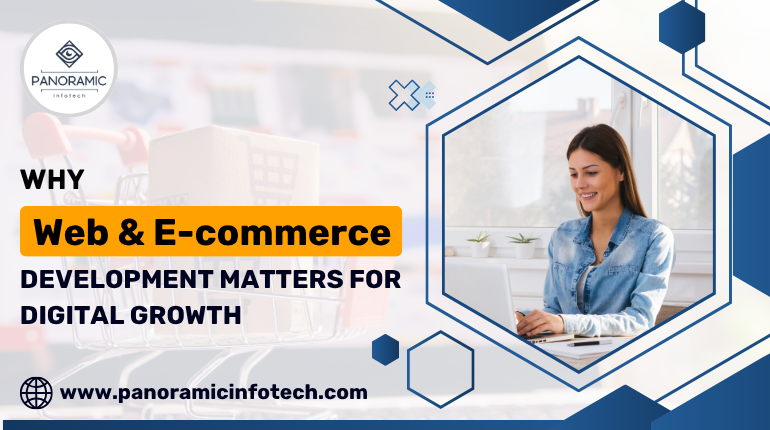In a world where digital storefronts increasingly replace physical ones, the success of a business hinges on a strong web and e-commerce presence. Effective web and e-commerce development empowers businesses to connect with global audiences, streamline transactions, and build lasting customer relationships through secure, scalable, and user-friendly platforms.A professionally built website is essential in today’s competitive digital environment. Modern consumers expect quick-loading pages, seamless navigation, and effortless checkout processes. Through effective e-commerce development, businesses can create reliable online platforms that not only meet these expectations but also evolve alongside changing user preferences and industry trends.
Key Advantages Include:
- Higher Sales & Broader Reach: A 24/7 online store expands your market and boosts sales.
- Stronger Customer Engagement: Personalized design and fast support encourage repeat visits.
- Improved Efficiency: Automation reduces manual work in inventory, payments, and orders.
- Secure Payments: Built-in gateways and data protection ensure safe, trusted transactions.
Core Components of Effective Web & E-commerce Development
- Responsive Design: Customers browse on various devices. A responsive layout ensures consistent performance on phones, tablets, and desktops.
- User-Friendly CMS: A simple content management system lets teams update products, blogs, and promotions without needing technical skills.
- Secure Payment Integration: Built-in, flexible payment options create a smooth checkout process and build customer confidence.
- Inventory Management: Real-time tracking prevents overselling and streamlines logistics.
- Search Engine Optimization (SEO): Optimized content and technical SEO improve visibility and attract organic traffic.
- Security & Data Protection: SSL, two-factor authentication, and GDPR compliance safeguard customer and business data.
Business Impact Across Industries
- Retail & Fashion: Interactive product galleries, personalized suggestions, and secure checkout drive higher conversions.
- Healthcare: Online booking, product availability, and secure transactions simplify patient services and product sales.
- Education: Platforms for digital courses, subscriptions, and learning content widen access to education.
- B2B Services: Features like quote requests, tiered pricing, and wholesale management streamline business processes.
Emerging Web & E-commerce Trends Driving the Future
- Headless Commerce: Separating the front-end from the back-end enables faster, more customized digital experiences.
- Voice Shopping: Smart assistants like Alexa and Google Home allow hands-free product searching and purchasing.
- AI & Chatbots: Smart automation to assist, recommend, and convert visitors into loyal customers.
- AR/VR Integration: Immersive product experiences like virtual try-ons and 360° views improve buying decisions.
- Mobile-First Approach: Designing primarily for mobile ensures the best experience where users spend most of their time.
Challenges in E-commerce Development—and How to Overcome Them
- High Cart Abandonment: Streamlining checkout processes and offering multiple payment options reduce drop-offs.
- Scalability Issues: Cloud-based platforms and modular development prepare businesses for growth.
- Compatibility: The right tech stack ensures smooth integration across systems.
Effective planning and expert collaboration help overcome these challenges by aligning technology with user expectations.
Conclusion
Web and e-commerce development goes beyond just setting up an online store—it’s about building a scalable, engaging, and conversion-focused digital experience. From responsive design to secure payments and tailored user journeys, investing in expert development prepares your business for long-term success.
Whether starting fresh or upgrading an existing platform, effective e-commerce solutions turn your digital vision into measurable growth.
 :
https://www.pinterest.com/panoramicinfotech/
:
https://www.pinterest.com/panoramicinfotech/

